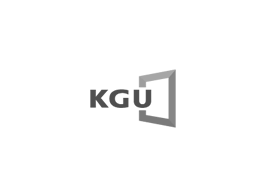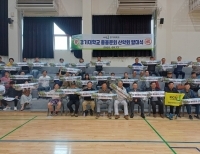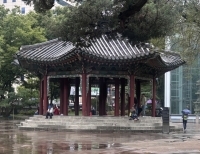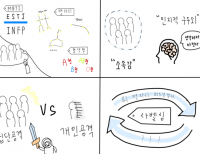As the summer vacation season arrives, the number of travelers going to Jeju Island to relax has increased. The increase in the number of people who want to rent cars, a means of easy transportation, has also increased, but the price has risen to a level that ordinary people cannot understand because there are only a limited number of rental companies available. However, travelers still choose to rent a car while paying a fortune. In addition, the supply of eggs has decreased recently due to the spread of bird flu, and prices have soared due to increased demand from consumers who want to buy them. In response, Pharos wants to learn about the concept of supply and demand and how prices rise due to these variables.
Demand refers to the desire of an economic entity to buy a particular product and the purchasing ability to actually buy it. Usually, people consider a number of factors when purchasing a product. However the most important of all is the price. Higher prices will reduce consumption of the product, while consumers will try to buy more if the price has fallen. Supply refers to the economic entity’s intention to sell goods. Supply is the amount of goods that a business intends to provide in relation to price. And there is an increasing supply quantity as the price of goods rises. This supply quantity is usually characterized by increasing prices of the goods as supply rises. If the market price is lower than the balanced price where supply meets demand, then there will be excess demand and customers will be willing to purchase at a higher price.
For example, there has been a recent rise in agricultural prices due to weather and the effects of COVID-19. Due to the hot and humid weather in summer, many agricultural products often go bad during the distribution process. If agricultural products go bad and the quality of the items goes down, the supply quantity of agricultural products naturally falls and consumers who want to buy them still exist, forcing prices to rise. As such, we usually balance supply and demand in a market economy when the forces of supply and demand coincide. If you look at the factors that affect demand, factors that affect consumption other than price include income, preference, price of substitutes, and size of the population. Other factors may include conspicuous consumption, dependence, and speculation. Many of these factors affect demand, but only price changes are considered in the law of demand.
Changes in prices can be identified with changes in supply and demand. The first example of a change in the price of supply and demand is rising egg prices. Egg prices have doubled in recent years. The underlying cause of the rise in egg prices is bird flu, which has spread nationwide. Bird flu has lowered the number of chickens and reduced the supply of eggs. On the contrary, the consumption of eggs has increased as the number of "home people" has increased due to the effects of COVID-19. Supply declined, but demand increased, so prices rose. Consumers are burdened by rising egg prices. The government imported eggs to stabilize egg prices, which increased supply. However, it is not easy to stabilize the price because the price of chicks has soared and they cannot quickly be replaced. Experts speculate that prices could soar further if bird flu spreads again in winter. When the supply and demand of eggs is identified through an economics graph, the supply curve shifts as the supply decreases. This results in more demand than supply. Over-demand is the rise in prices due to competition among consumers. To stabilize this, the supply and demand must be balanced through a supply growth policy that drives the supply curve in the graph.
The second example of a change in the price of supply and demand is rising prices of rental cars on Jeju-Island. Due to COVID-19, travel abroad was restricted. Many people who wanted to travel abroad began to turn to Jeju-Island, which is called Korea's overseas destination. As a result, the number of tourists to Jeju-Island surged. If you have ever traveled to Jeju-Island, you know that rental cars are necessary due to the nature of your trip. When traveling to Jeju Island, a rental car is considered as the top priority, and the number of passengers increased. However, the number of car rental companies is limited, which means limited supply and reduced supply. Demand has increased, but supply has declined, so rental car prices have soared similar to eggs. The reality is that consumers of eggs and rental cars are burdened with high prices. People have no choice but to accept the soaring prices because there is no substitute.
The biggest example of supply and demand is luxury goods. Necessities are indispensable items in everyday life, such as water and food. Luxury goods, on the contrary, are commodities that use expensive materials for the high-income consumption class and are produced in small quantities. This is the opposite of the necessities needed in everyday life. Why do diamonds cost so much? It’s because there are many people who want diamonds, but there is not enough supply for everyone. As such, the effects of supply and demand can be easily understood by anyone through graphs. If supply decreases and demand increases, prices increase; on the contrary, if supply increases and demand decreases, prices decrease.
Many people do not fully understand why prices change. In order to stabilize the price of eggs and Jeju rental cars, supply will have to increase or demand will have to decrease. To do so, the country will need more chickens, and fewer travelers will need to choose Jeju Island as their destination. Perhaps it will all be resolved after the pandemic is over.
75th Reporter · KANG ROK KI · krk1754@naver.com
75th Reporter · KIM YUN JUNG · dbswnd7676@naver.com
- TAG
-
 Freedom Given to Youth: An Opportunity for Choice or a Burden of Constraint?
“Are we truly free today?” Classical literature is far more than time-honored stories. It offers profound insights into human nature and society that transcend time, remaining a valuable resource for examining the challenges our world faces today. This article will draw on George Orwell’s 1984 and Charles Dickens’ Oliver Twist to explore the contemporary issues of youth housing and the emergence of a surveillance society ...
Freedom Given to Youth: An Opportunity for Choice or a Burden of Constraint?
“Are we truly free today?” Classical literature is far more than time-honored stories. It offers profound insights into human nature and society that transcend time, remaining a valuable resource for examining the challenges our world faces today. This article will draw on George Orwell’s 1984 and Charles Dickens’ Oliver Twist to explore the contemporary issues of youth housing and the emergence of a surveillance society ...

 [단신] 산악회, 본교 동문의 버팀목이 될 수 있도록
[단신] 산악회, 본교 동문의 버팀목이 될 수 있도록
 [사회메인] 노인 인구 1,000만 시대, 준비 없는 사회가 불안해
[사회메인] 노인 인구 1,000만 시대, 준비 없는 사회가 불안해
 [네컷만화] 라벨링 문화
[네컷만화] 라벨링 문화
 [진리터] 결국 우리 모두 돌아볼 것이니
[진리터] 결국 우리 모두 돌아볼 것이니

 목록
목록










